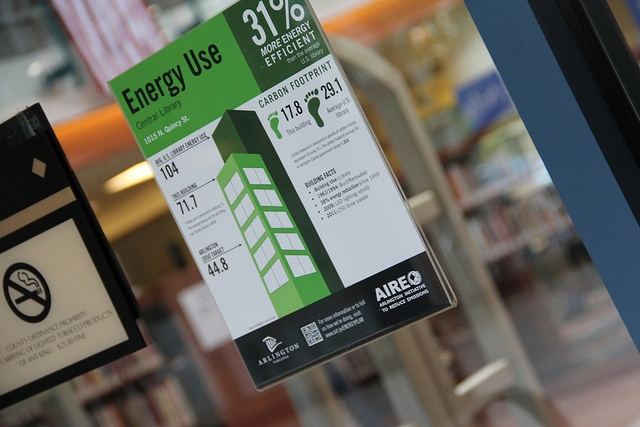http://e-info.org.tw/node/114280
1/5節能家電廣告不實 歐盟消費者全買單
文字大小
15 1 Share1
本報2016年4月1日綜合外電報導,吳郁娟編譯;蔡麗伶審校
自動洗碗機運作時其實不是省電模式、吸塵器的耗電比廣告所宣稱的高出54%,恐怕會令許多消費者傻眼。英國政府贊助的節能信託公司(EST)進行實測,就發現了這樣的情形。EST為期三年的調查結果顯示,歐洲家用電器有1/5的節能效果與廣告不符。
節能家電最近越來越風行,但實際效果可能會打折扣。本圖僅供示意。圖片來源:Arlington County Environmental Services(CC BY-NC 2.0)。
省電廣告不實 消費者花冤枉錢
100項符合歐盟節能設計法的家電產品之中,總計有18項不符規定。其中,德國電器公司AEG的冰箱,比廣告所標示高出12%用電量、滾筒式烘乾機在關機模式仍會耗電,還有數位收音機的耗電量,比廣告所說的高出2倍。
這項調查由EST與多個關注能源效率的歐洲團體共同合作完成。EST的博士Fanoula Ziouzia表示,這些樣本相當具指標性,「我們懷疑,今天賣出去的十件家電產品,就有一件涉及廣告不實。」這些家電的實際用電量超過消費者的預期,估計讓消費者多付出80億英鎊(約3710億新台幣)。
調查指出,這筆多出的費用無法個別懲處,因為家電涵蓋範圍太廣,例如英國品牌Azaton的音響多出18英鎊的電費、Kunft的吸塵器多出20英鎊,AEG的冰箱則多達31英鎊。
負責認證的EST經理繆爾(Stewart Muir)說:「這項調查僅涵蓋少部分產品,這些廣告不實的產品,每年多出的電費得由消費者買單。」
家電軟體升級程式 成隱性耗電因子
節能設計法最初目的是藉由減少能源浪費,進而減少碳排放。假若每項產品提升10%的節能效率,至2020年,約可減少4700萬噸的二氧化碳排放至大氣層。
歐盟市場調查單位的可信度,廣受一般製造商認同,即使英國國家測量局和相關單位都也相當尊重。然而,家電製造協會的發言人表示,這份調查指出製造商無法達到歐盟規範的節能設計,他們對結果存有很大問號。
很多製造商非常遵守法規,且花了很多費用確認產品的節能效果,並對自家節能產品信心滿滿。這18項不合規定的製造商中,有6家公司拒絕對EST的調查提出進一步說明。多數公司提出澄清,還有幾家廠商表示他們已發展出軟體升級程式,提供消費者下載。但是EST技術人員表示,理論上,軟體升級代表該產品的能源消耗與能源使用也會跟著提高。
「這種情況很難遏止,一旦消費者能在家裡將家電升級,代表這些產品日後的潛在耗能量比廣告上宣傳的還高。這對執法單位來說也是一大難題。」 Muir 說 。
【參考資料】
http://www.theguardian.com/environment/2016/mar/22/nearly-1-in-5-home-appliances-uses-more-energy-than-advertised-survey-finds
Nearly one in five home appliances uses more energy than advertised, survey finds
European electronic goods study finds devices from fridge freezers and tumble driers to digital radios and vacuums using more electricity than advertised
Nearly one in five fridges, dishwashers, microwaves and other household gadgets guzzle more energy than advertised according to a three-year survey of Europe’s home appliance industry.
One AEG fridge freezer tested used 12% more power than claimed, while a Hotpoint tumble-drier was found to be sucking considerable power while supposedly in ‘off’ mode.
The Marketwatch study also found digital radios using over twice their stated energy when turned off, dishwashers not washing properly in eco cycle mode, and vacuum cleaners hoovering up 54% more electricity from the plug than advertised.
In all, 18 of the 100 products were non-compliant with EU ecodesign laws, according to the tests by several European efficiency groups, led by the EnergySaving Trust (EST) in the UK.
Dr Fanoula Ziouzia, the EST’s head of products, said: “While this was a targeted sample, we suspect that as many as one in 10 household appliances sold today consume more energy than the manufacturer states. This could be misleading for consumers and result in higher energy bills – and true product cost – than they would anticipate.”
Efficiency studies estimate that misleading energy claims by product manufacturers could cost consumers around €10.5bn (£8bn) in extra bills.
But the added annual costs in the latest Marketwatch survey are not punitive individually, ranging from an extra £18 for an Azatom sound bar, to £20 for a Kunft vacuum cleaner, or £31 for an AEG fridge freeze.
Stewart Muir, a certification manager at the EST said: “We only covered a small proportion of products. The cumulative extra energy used across the entire product market ranges could add up to a substantial cost to consumers.”
Ecodesign laws are primarily meant to cut carbon emissions by preventing wasteful energy use. The efficiency group Clasp expects a 10% shortfall in energy saving targets for products to translate into an extra 47m tonnes of CO2 equivalent reaching the atmosphere by 2020.
A problem among some EU market surveillance authorities is widely recognised by campaigners and manufacturers alike - although the UK National Measurements and Regulations Office is generally well-respected.
But a spokeswoman for the Association of Manufacturers of Domestic Appliances (Amdea) said that talk of its members failing to meet EU ecodesign targets was a “big if”.
She said: “Our members are very committed to this legislation and have spent a great deal of money on ensuring that their products are more energy efficient. They would argue that they have had a lot of success in doing that.”
Six of the 18 failing companies in the Marketwatch survey refused to enter into dialogue with the EST about the test results. Most companies though showed an honest engagement with the issues raised by the survey.
Several firms have since developed automatic software updates that can be downloaded by consumers. But technicians at the EST say the very ease with which energy consumption can be changed raises concerns for them that software updates could, theoretically, add to energy use as well.
“There is nothing stopping it,” Muir said. “If you can update products once they are in the home, they could potentially consume more afterwards than they did when they were originally tested. It is very difficult to police on a large scale.”


沒有留言:
張貼留言